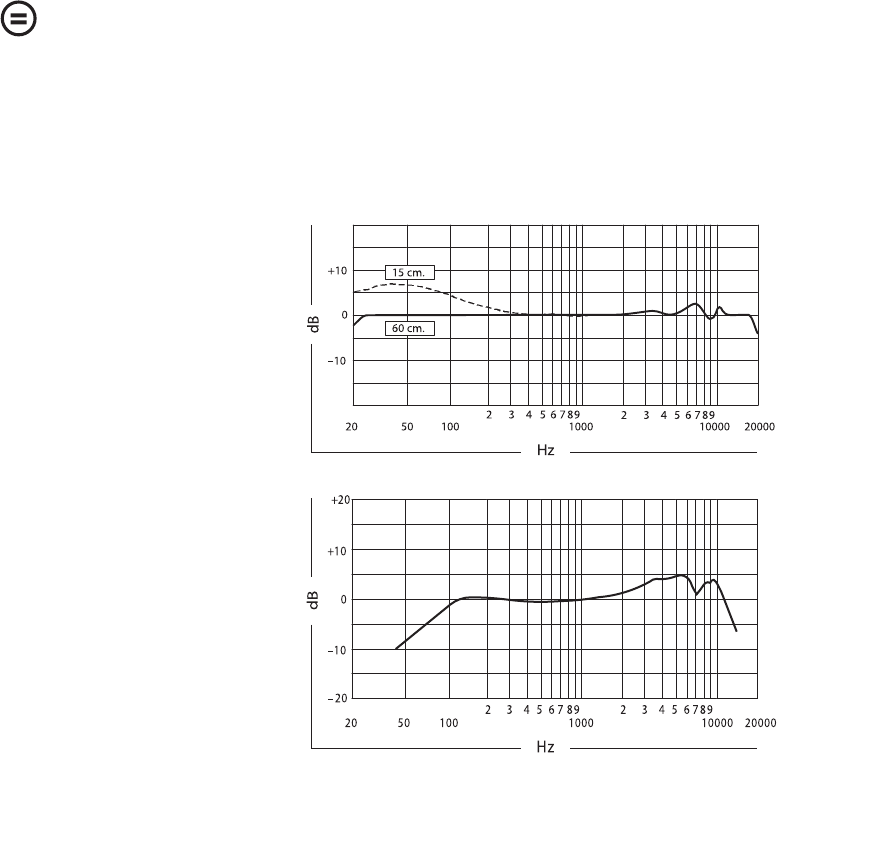
M
ICR OPHONE
C
HAR ACTER ISTICS
Many different kinds of microphones are available, but fundamentally, they
all work on the same principle: sound waves move a plate or membrane
(diaphragm) inside the mic, and this movement is translated into electrical
voltage. The exact details of how this is implemented impact the way
recordings sound.
While trying to figure out whether a given mic is the right choice for a par-
ticular recording chore, we need to look at several qualities:
• Amplitude response: Sensitivity to sounds of different loudness
• Directionality: Sensitivity to sounds coming from different angles
• Frequency response: Sensitivity to different parts of the frequency
spectrum as well as specific low-frequency characteristics (Figure 6.1)
Figure 6.1 Frequency
response curves vary by mic.
A smooth response (top; a
Shure KSM-32) responds
relatively consistently across
the frequency spectrum.
(The dotted line shows the
proximity effect: bass frequen-
cies are boosted when the
source is 15 centimeters from
the mic as opposed to 60.)
A less consistent curve (bot-
tom; a Shure SM-58) might
reduce low frequencies and
accentuate mid frequencies.
Smooth is not necessarily
better: the response on the
bottom can be perceived as
a “warmer” sound and is
intended for use with vocals.
(Images courtesy Shure, Inc.)
A mic capsule is the
construction that houses
the diaphragm and
other microphone com-
ponents.
160
C
HAPTER
6: R
ECORDING
I
NSTRUMENTS AND
S
OUND
Get Real World Digital Audio now with the O’Reilly learning platform.
O’Reilly members experience books, live events, courses curated by job role, and more from O’Reilly and nearly 200 top publishers.

